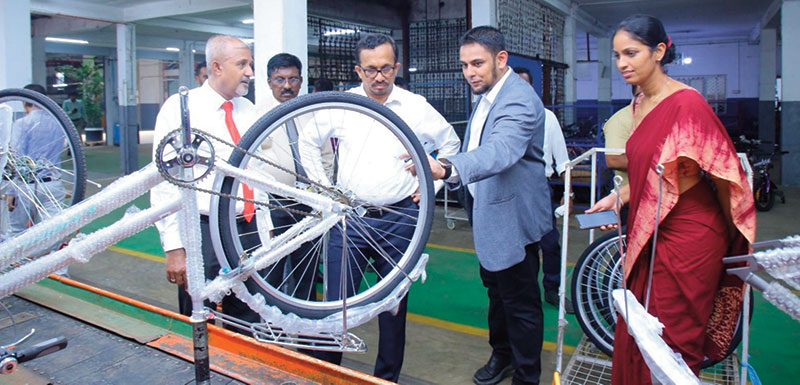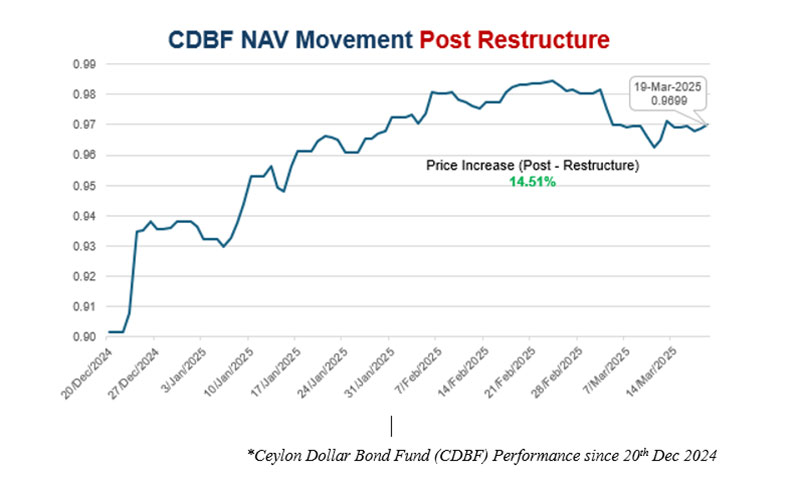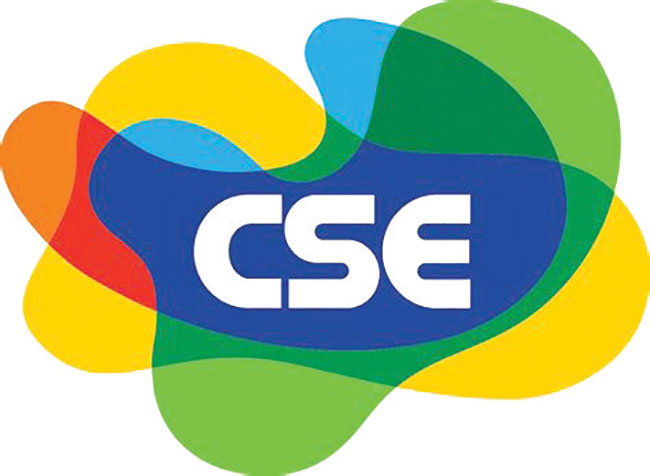Business
How global MNCs can help bring USD into Sri Lanka

By Santosh Menon, Director, World for Lanka.
S/h-Motivates all their global employees and consumers to help Sri Lanka at this time of great need.I was recently checking out the website of a global MNC that is a huge player in the FMCG segment in Sri Lanka, and they said they operated in over 190 countries and had over 3.6 billion consumers worldwide.
A well-known No.1 global FMCG brand that dominates the market in Sri Lanka is present in 200 countries and claims to sell 1.9 billion servings daily, whereas the No. 2 global FMCG brand in Sri Lanka claims to be present in 200 countries and sells 1 billion servings daily.
A well-known global food company with famous brands and a sizable market share in Sri Lanka claimed on its website to have paid out 160 billion USD in cash to shareholders globally over a 15-year period. A major search engine claims that its product reaches 3.6 billion people worldwide, whereas a well-known social media brand claims to have 2.9 billion users.
What’s more, each of these global brands currently operates in Sri Lanka.
Let us review what Sri Lanka needs now and how these major global players can assist the country. According to recently published media reports, Sri Lanka currently requires somewhere between 5 billion USD for six months and 9 billion USD this year. This would ensure that people can afford essential necessities like fuel, food, and medicine, allowing them to lead regular lives and preventing the economy from coming to a complete standstill (we have already seen it happen). This also ensures that individuals receive the basic medical care required to maintain their health and that emergency medical care is available when necessary.
So what typically happens when a country does not have enough foreign currency to acquire the fundamental necessities? – It asks financial institutions for assistance, asks its diaspora to bring in the USD, seeks more exports, or tries to attract investments. It also asks friendly nations for loans or credit lines. We can see all of these happening. An Indian credit line has been obtained. I believe there are talks going on for a Chinese credit line. There is a conversation with the IMF. An effort is being made to urge the diaspora to send money back home using the banking system. To increase Sri Lanka’s foreign reserves, the central bank is working with exporters to make sure that all of their profits are being brought home. There are also discussions about how to boost investments, although this is a challenging task at the moment given the current political and economic climate.
So what else can be done? How can global MNCs contribute?
One must admit that these businesses are already accomplishing a lot; in the majority of cases, they continue to operate factories, keep employees motivated, pay salaries, and provide their Sri Lankan teams with a sense of security during these unpredictable times. Everyone in the nation suffers when the nation is suffering. Global MNCs are also no different. Additionally, they have been observed making donations from their CSR budgets to aid the humanitarian situation.
But what if I said that if global MNCs used their global system to help the country, they might be able to bring in enormous amounts of funds?These MNCs have access to an asset that, if they so choose, can be used to significantly assist Sri Lanka at this pivotal juncture in the nation’s history.To reach their customers, this asset consists of a sizable marketing infrastructure.Also, these customers are generous donors. Donors are expected to have given 4.6 billion USD to philanthropic causes in the US alone in 2020, but this is only one nation. Imagine having access to the 200 nations that these multinational corporations do.
It is simple to target these donors—who are the customers of multinational corporations (MNCs) and digital businesses—online with content that will inspire them to donate and lessen Sri Lanka’s suffering. There are 4.6 billion users online, for context. Global netizens are what they are known as, and in the modern world, we can use digital media to directly address them.
Technically, Sri Lanka’s needs for the upcoming year will be met by merely 2 USD from each of the world’s 4.6 billion internet users.If the leading digital companies (the social media and search engine giants) grant internet users access to their customer databases, and if they can be persuasively shown how just a few dollars from each of them would guarantee Sri Lanka and its population a normal life in 2022 or 2023, then we might witness unhindered foreign exchange flow.
So here are three things that global MNCs can do to help Sri Lanka out of this dilemma, with different degrees of impact.Using its staff and global network, it will raise awareness and provide money to Sri Lanka.Target international donors through social media and digital media with an effective and persuasive campaign to encourage USD inflow into Sri Lanka from selected regions.Utilize its products to raise money for Sri Lanka by increasing awareness of the issue there in international markets.
What are the benefits for the Global MNCs if they do this for Sri Lanka?
Companies and brands that are seen to support communities and engage with them are more likely to be preferred by consumers, who then become more devoted to their brands. This is a chance to inspire devotion and show genuine kindness.
There is a chance to shift people’s perceptions of some MNCs from being purely profit-driven organizations to ones with hearts and conscience. A multinational corporation (MNC) will be regarded as a really ground-breaking business if it can mobilize money from donors all over the world to aid Sri Lanka. By bringing money into Sri Lanka, they will also aid in boosting the country’s economy, which will benefit their own businesses and brands.
Now is the perfect opportunity for global corporations to show Sri Lankans that they truly care about them and to show the rest of the world how they can legitimately provide value by aiding a nation in getting out of a crisis. This is done by using their most innovative and top-tier global talent to tackle regional problems and by addressing them. What is needed is local leadership that can activate this program by convincing the global entity to prioritize Sri Lanka and navigating the global organizations’ processes. Let’s hope the multinational corporations (MNCs) present in Sri Lanka can exercise their powerful muscles when it counts most for Sri Lanka.
Business
Industry and Entrepreneurship Development Minister Handunneththi’s visit to Lumala highlights key industrial concerns

With the aim of assesing the current challenges faced by local industrialists and explore avenues for government support, Minister of Industry and Entrepreneurship Development Hon. Sunil Handunneththi visited City Cycle Industries Manufacturing (Pvt.) Ltd., widely known as Lumala, on March 24 at its factory in Panadura.
During the visit, Minister Handunneththi engaged with senior officials and employees to understand their concerns and operational difficulties. In a statement shared on social media, the Minister acknowledged the pressing challenges affecting Sri Lanka’s manufacturing sector and emphasized the government’s commitment to providing swift and effective solutions.
Minister Handunneththi further reiterated the government’s intent to position local manufacturers as key stakeholders in Sri Lanka’s economy by addressing regulatory hurdles, market imbalances, and supply chain constraints.
The visit comes amid growing concerns from Lumala employees and management regarding the state of Sri Lanka’s bicycle manufacturing industry, in the backdrop of facing significant challenges, including an influx of imported bicycles and components that circumvent regulatory checks. In addition, the high taxes on raw materials used in local manufacturing has further exacerbated production costs, making it difficult for domestic manufacturers to remain competitive.
Earlier this year, Lumala employees called for urgent government intervention to address these challenges, warning that ongoing financial strain could lead to further shutdowns of critical production units, job losses, and setbacks to the broader industrial ecosystem. With a local value addition of 50-70 percent verified by the Ministry, its workforce remains hopeful that government action will help achieve an ethical manufacturing industry.
Lumala, a household name in Sri Lanka’s bicycle industry, has been a key player in sustainable mobility solutions for over 35 years. The company was recently honored with the Best National Industry Brand award under the Large-Scale Other Industry Sector category at the National Industry Brand Excellence Awards 2024.
With a production capacity of 2,000 bicycles per day and a workforce of 200, Lumala continues to cater to both domestic and international markets, producing a diverse range of bicycles, electric bikes and light electric vehicles. In line with Sri Lanka’s goal to expand forest cover to 32 percent by 2030 and cut GHG emissions by 14.5%, Lumala is actively contributing to this mission—both as a company and through its diverse range of products.
As Sri Lanka works towards strengthening its local manufacturing sector, Minister Handunneththi’s visit signals a crucial step toward addressing industrial concerns and reinforcing government support for sustainable and competitive domestic production.
Business
New SL Sovereign Bonds win foreign investor confidence

Sri Lanka’s country rating was upgraded from ‘Restricted Default’ to ‘CCC’ following the successful exchange for the new International Sovreign Bonds (SL ISBs) during December 2024. The three types (03) of exciting new sovereign bonds have restored foreign investor confidence.
The Central Bank of Sri Lanka (CBSL) has performed a remarkable role in guiding the economy out of default status and restored economic stability, and gained Sri Lanka a non-default Country Rating of ‘CCC’. Among the key achievements of CBSL, have been to reduce treasury interest rates under 9% and stabilize the currency while rebuilding foreign reserves to $ 6Bn.
SL offers four Macro Linked Bonds (MLBs) linked to GDP growth, a Governance Linked Bond (GLB) and a short term, Fixed Coupon Bond for unpaid Past Due Interest (PDI). The MLBs offer variable returns depending on SL’s GDP growth from 2024 to 2027, (e.g. haircuts can vary between 16% to 39%). The GLB interest can vary depending on meeting 15.3% and 15.4% of Total Revenue/ GDP thresholds in 2026 and 2027 respectively. The PDI bond offers a fixed coupon of 4% until 2028 and trades at around $94.
This combination of unique, variable returns offers global investors an exciting opportunity to capitalize on SL’s economic revival and US interest rate movements. Sri Lanka’s economic resurgence in 2024 was promising, with a 5% GDP growth rate. With improving investor confidence, SL ISB daily turnover now exceeds $10mn.
The Ceylon Dollar Bond Fund (CDBF) is the only USD Sovereign Bond Fund that is exclusively invested in SL ISBs with Deutsche Bank acting as the Trustee and Custodian Bank. The Fund reported returns of 53% in 2023 and 39% in 2024.
We invite foreign investors to enter CDBF while Sri Lanka is rated at ‘CCC’ and consider realizing their investment upon SL reaching a Country Rating of ‘B- ‘. Other advantages of CDBF are, the ability to withdraw anytime and being tax exempted.
Ceylon Asset Management (CAM), the Fund Manager, has commenced an advertising campaign to promote the CDBF to the Sri Lankan Diaspora, South Asian, Middle Eastern and Australian Investors. CAM is an Associate Company of Sri Lanka Insurance Corporation (SLIC) and licensed under the Securities and Exchange Commission of Sri Lanka Act, No. 19 of 2021.
Meanwhile, the Ceylon Financial Sector Fund managed by CAM emerged as the top performing rupee fund in Sri Lanka during 2024, with a return of 64%. Investors can find out more on www.ceylonassetmanagement.com or write to us on info@ceylonam.com.
Past performance is not an indicator of the future performance. Investors are advised to read and understand the contents of the KIID on www.ceylonam.com before investing. Among others investors shall consider the fees and charges involved.(CAM)
Business
Share market plunges steeply for second consecutive day in reaction to US tariffs

CSE plunged at open, falling for the second consecutive day yesterday, down over 300 points in mid- morning trade.US President Donald Trump has imposed a 44 percent tax on Sri Lanka’s exports in an executive order which he claimed, spelt out discounted reciprocal rates for about half the taxes and barriers imposed by the island on America.
As a result both indices showed a downward trend. The All Share Price Index dropped 300 points, or 2.32 percent, to 15,294.94, while the S&P SL20 dropped 101 points, or 2.71 percent, to 4,517.37.
Turnover stood at Rs 3.1 billion with six crossings. Those crossings were reported in Sampath Bank which crossed 1.6 million shares to the tune of Rs 181 million and its shares traded at 109, JKH 4.1 million shares crossed to the tune of 80.5 million and its shares sold at Rs 19.5.
Hemas Holdings 400,000 shares crossed for Rs 45.6 million; its shares traded at Rs 114, CTC 25000 shares crossed to the tune of Rs 32.2 million; its shares traded at Rs 1330, Commercial Bank 200,000 shares crossed for 27 million; its shares traded at Rs 135 and TJ Lanka 157,000 shares crossed for Rs 20 million; its shares traded at Rs 46.
In the retail market top six companies that have mainly contributed to the turnover were; Sampath Bank Rs 296 million (2.9 million shares traded), JKH Rs 220 million (11.2 million shares traded), Haylays Rs 195 million (142,000 shares traded), HNB Rs 151 million (519,000 shares traded), Commercial Bank Rs 138 million (1 million shares traded) and Central Finance Rs 129 million (735,000 shares traded). During the day 218 million shares volumes changed hands in 22000 transactions.
It is said the banking sector was the main contributor to the turnover, especially Sampath Bank, while manufacturing sector, especially JKH, was the second largest contributor.
Yesterday, the rupee opened at Rs 296.75/90 to the US dollar in the spot market, stronger from Rs 296.90/297.20 on the previous day, dealers said, while bond yields were up.
A bond maturing on 15.10.2028 was quoted at 10.35/40 percent, up from 10.25/30 percent.
A bond maturing on 15.09.2029 was quoted at 10.50/60 percent, up from 10.45/55 percent.
A bond maturing on 15.10.2030 was quoted at 10.60/70 percent, up from 10.30/65 percent.
By Hiran H Senewiratne
-

 Business2 days ago
Business2 days agoStrengthening SDG integration into provincial planning and development process
-

 News6 days ago
News6 days agoBid to include genocide allegation against Sri Lanka in Canada’s school curriculum thwarted
-

 Sports7 days ago
Sports7 days agoSri Lanka’s eternal search for the elusive all-rounder
-

 Business21 hours ago
Business21 hours agoNew SL Sovereign Bonds win foreign investor confidence
-

 Sports3 days ago
Sports3 days agoTo play or not to play is Richmond’s decision
-

 News7 days ago
News7 days agoComBank crowned Global Finance Best SME Bank in Sri Lanka for 3rd successive year
-

 Features7 days ago
Features7 days agoSanctions by The Unpunished
-

 Features7 days ago
Features7 days agoMore parliamentary giants I was privileged to know











